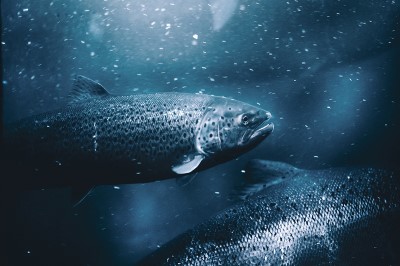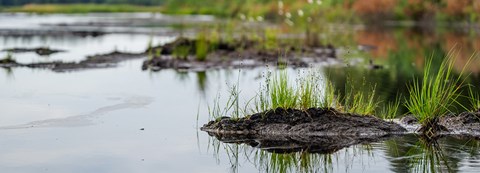Biodiversity
We created the first biodiversity roadmap for the Oulun Energia Group in early 2024. The purpose of Oulun Energia Group’s biodiversity roadmap is to describe the objective and concrete actions with which we are responding to preventing the deteriorating state of biodiversity.
The Group’s various actions have a greater or lesser impact on the environment and also have profound effects that harm biodiversity. The biodiversity roadmap is strongly linked to Oulun Energia Group’s sustainability plan.
Oulun Energia’s biodiversity vision is to be nature positive by 2035. Nature positivity means that the business operations as a whole benefits biodiversity more than it harms it.
Customers and interest groups want to know about our concrete actions and plans towards sustainability. In our strategy, we have specified that we are a responsible pioneer and that we take responsibility for people and our environment. This pledge also requires us to take action for biodiversity.
Oulun Energia has identified the biodiversity impacts of its operations. Direct impacts include air, water, and soil emissions, as well as the impacts caused by construction. Supply chains and partner operations cause indirect impacts.
The construction of the Merikoski power plant in the 1940s closed off the lower part of the Oulujoki river catchment area with a dam. The construction of the hydroelectric power plant caused significant impacts for aquatic organisms and especially for migratory fish.
The procurement of fuels for energy production has both direct and indirect impacts. Oulun Energia uses wood fuels, peat, and Solid Recovered Fuel as fuel for the plants. The introduction of peat extraction land has weakened the biodiversity of marshlands.
In terms of forest energy, the impacts are indirect, as we buy the fuels through a supply chain.
Our actions to increase biodiversity
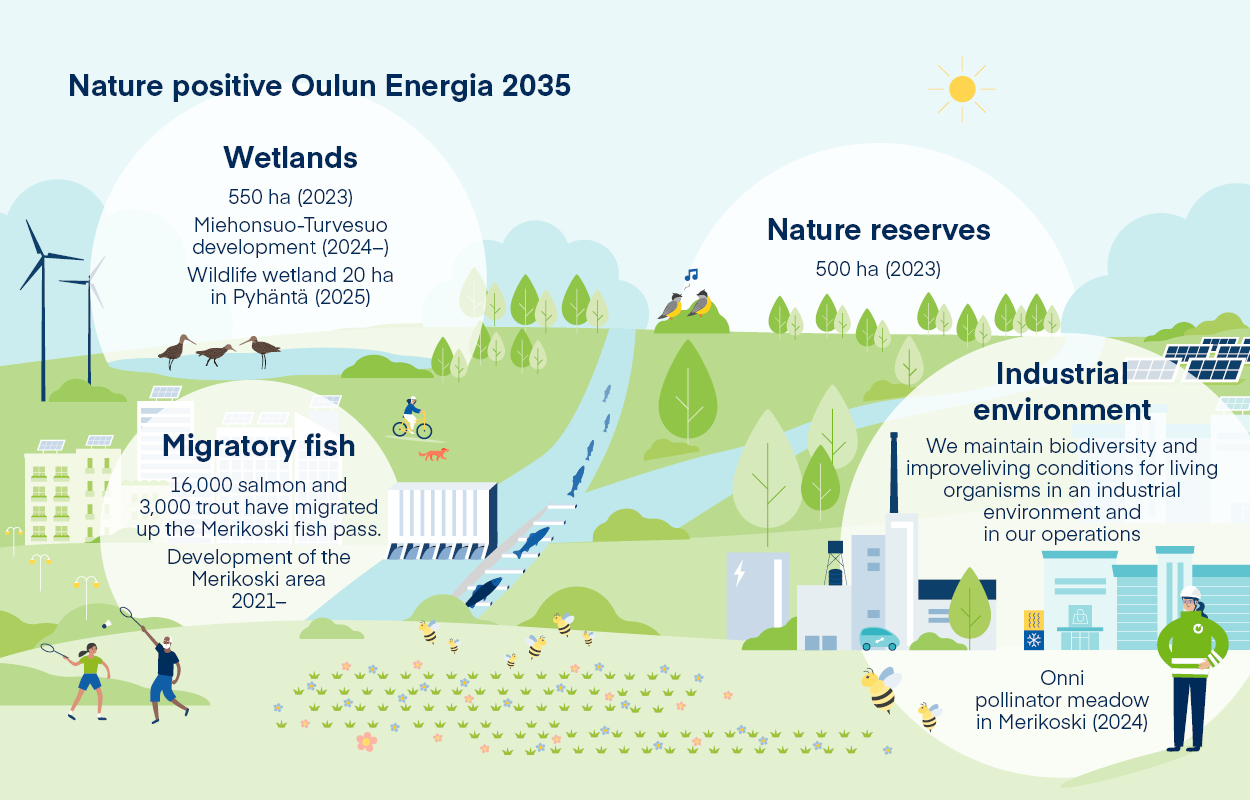
Development of the Merikoski area
The Merikoski area has changed significantly over the past century. A power plant was constructed in the area in the 1940s, and since then, the city’s expansion around the area has been rapid. The area is home to the Hupisaaret Islands city park, which is a significant recreational destination for city residents. The area is also home to Hartaanselkä, a significant fishing destination.
In conjunction with efforts to support migratory fish, the Merikoski fish pass and the Hupisaari streams built in the Merikoski area have been restored to serve as breeding grounds for sea trout. There have also been investigations into the suitability of Merikoski’s old channel as a breeding ground for salmonids.
In 2024, there is a study is underway to examine what kind of development measures should and could be implemented in the area.
Read more about development of the Merikoski area
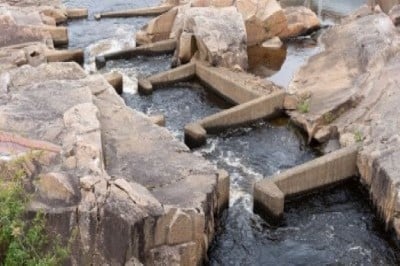
New life in the wetlands
Turveruukki has been producing peat since 1975. New extraction lands have not been established since 2018. The main focus of operations has shifted from production to the decommissioning of the lands. In accordance with the permit process related to peat production, we carry out restoration work, after which the area goes into further use.
For decades, different types of wetlands have been formed on land decommissioned from peat production. Wetlands provide a breeding ground for many plant and animal species. They can also act as water purifiers in a catchment area. Wetlands have been formed on an area of about 600 hectares and their number will increase as the lands leave production.
A waterfowl habitat of more than 50 hectares was completed in Kurunneva, Rantsila in 1996. Structures supporting recreational use have been built in the area, such as a bird-watching tower, a campfire hut, and a peat sauna.
In 2011, 45 hectares of the former Karjoneva peat production land have been incorporated into the Finnish Natural Heritage Foundation’s Konttikangas-Karjoneva conservation area. Lake reedbed rapidly vegetated the area. The area has a multi-species bird population. Nesting birds in the area include, for example, wood sandpiper, pintail, swan, crane, and bean goose. Birds also stop in the area to rest and eat during migration periods. There is a nature trail in the area.
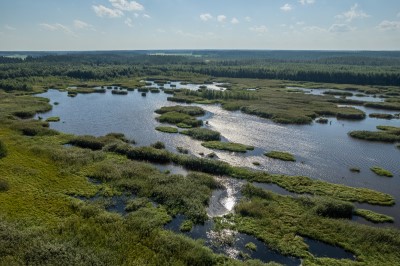
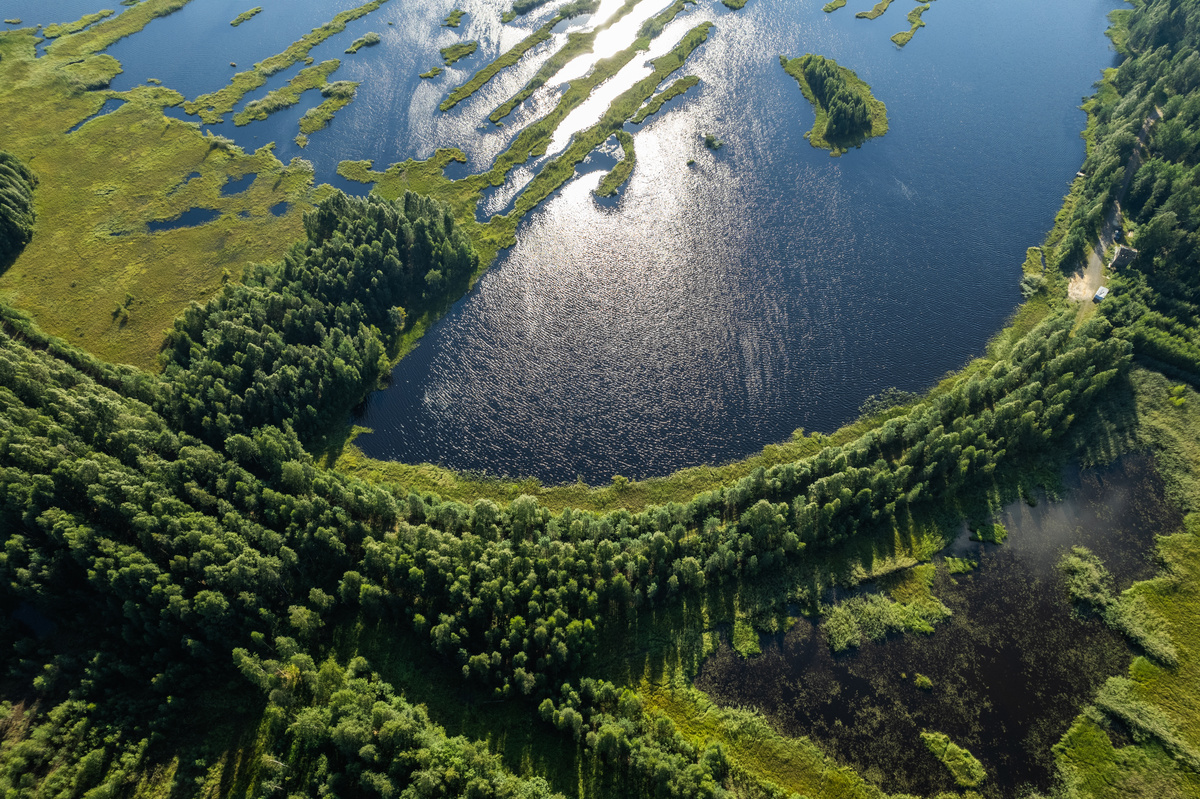
We protect the original peatland environment
We have been purchasing peatland for peat production for decades. Some of this acquired land has been excluded from peat production and thus has remained in an almost natural state. These areas may have a high nature conservation value, which is why they have also been made into nature conservation areas of about 500 ha from different parts of North Ostrobothnia.
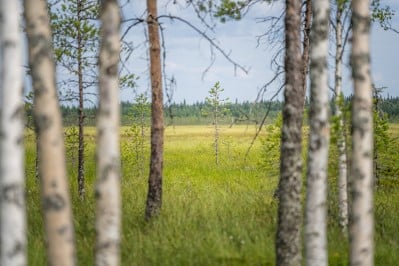
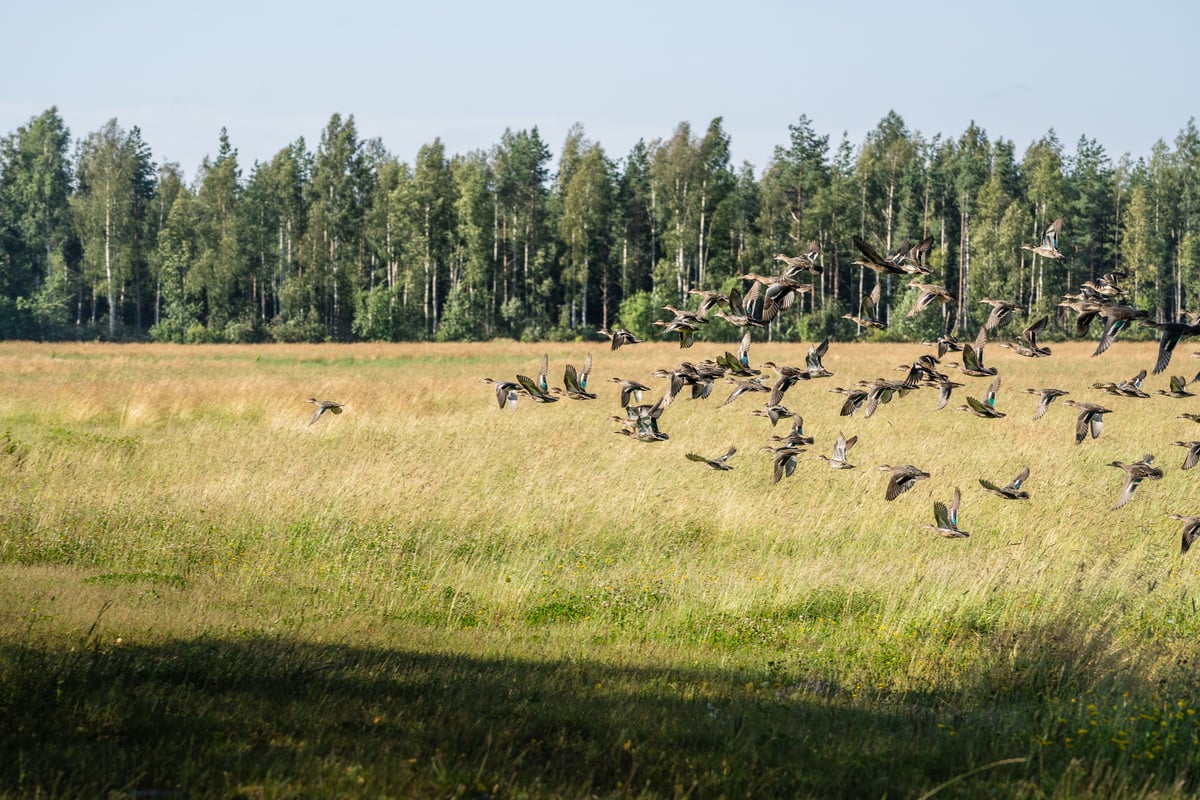
Onni sustainability acts
Our Onni carbon-neutral district heating customers get to participate in our sustainability efforts each year by voting for their preferred sustainability act.
For our sustainability act of 2025, our customers chose a naturally diverse wetland which supports biodiversity and purifies the water bodies in the area. The planned wetland will be formed in the summer of 2025.
Our customers voted for the creation of an urban pollinator meadow as the sustainability act to be implemented in 2024. The meadow was formed next to the pedestrian and cycle path below the Merikoski power plant. Oulun Infra was responsible for the implementation of the project. The pollinator meadow was implemented by first removing the trees and lawns from the area. In their place, we sowed a meadow plant mix and planted container-grown seedlings suitable for butterflies and pollinators.
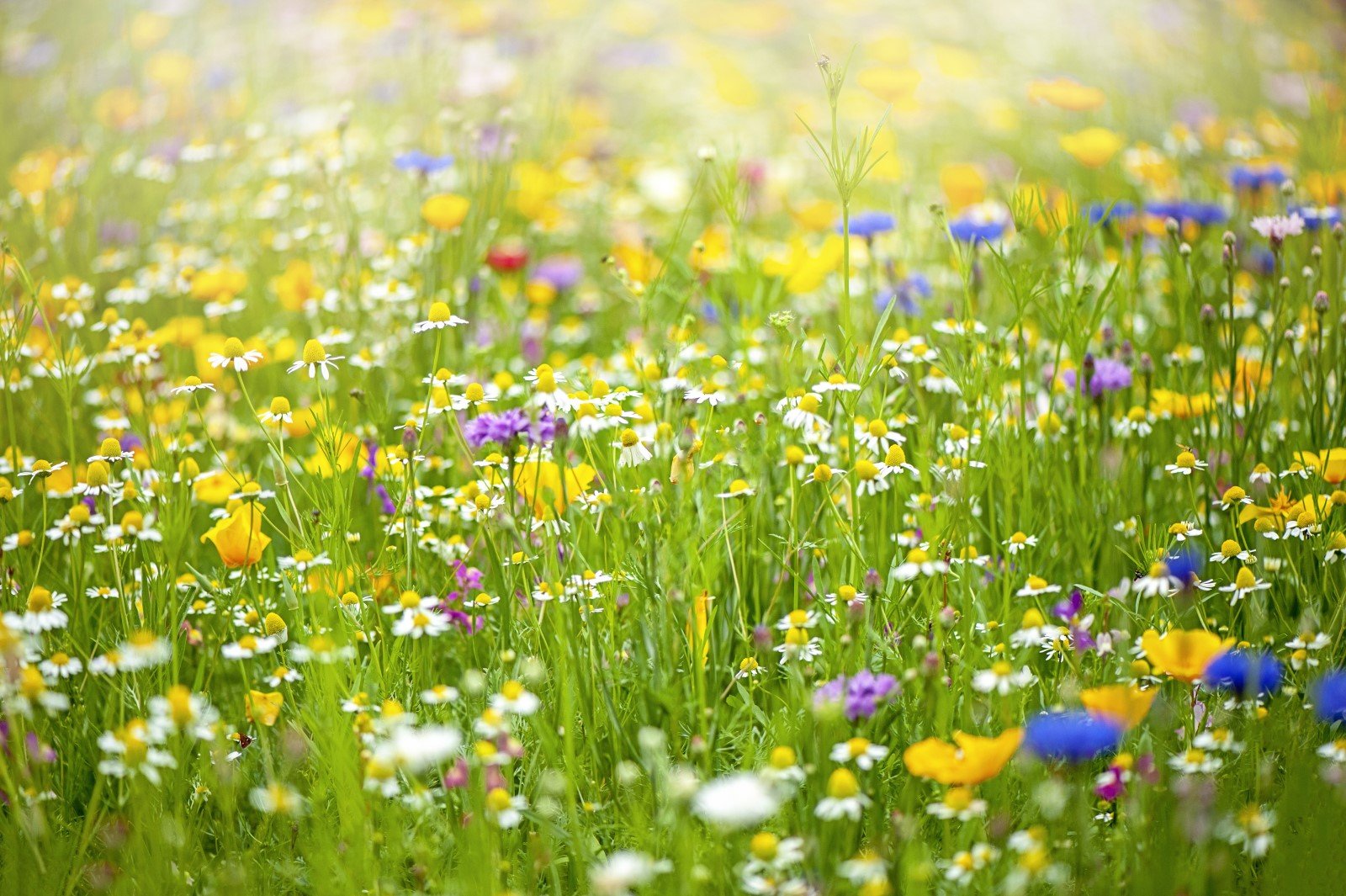
Joint projects that increase biodiversity
We have co-funded projects related to biodiversity at several research institutes. The most recent large-scale research project has been the Sateenvarjo III project led by the Natural Resources Institute Finland, which aims at the restoration of migratory fish populations. The project monitors the behaviour of migratory fish (salmon, trout, and powan) in existing sites. The collected research data can be used both in connection with the project sites and with implementation solutions that improve the passage of new migratory fish.
Through the Miljöö Innovation Grant, we have granted funding for nature projects. We have funded, for example, the construction of the Loppula Nature House, which will enable the use of the Sanginjoki Nature Reserve.
With the OuMo project funding, we are contributing to improving the environmental conditions of the Oulujoki river water system and reducing the harm caused by the production of hydropower. The funding has been used, for example, for stocking salmon smolts and monitoring the effectiveness of the stocking, as well as for monitoring the reintroduction of sea trout in the Hupisaari Islands.
